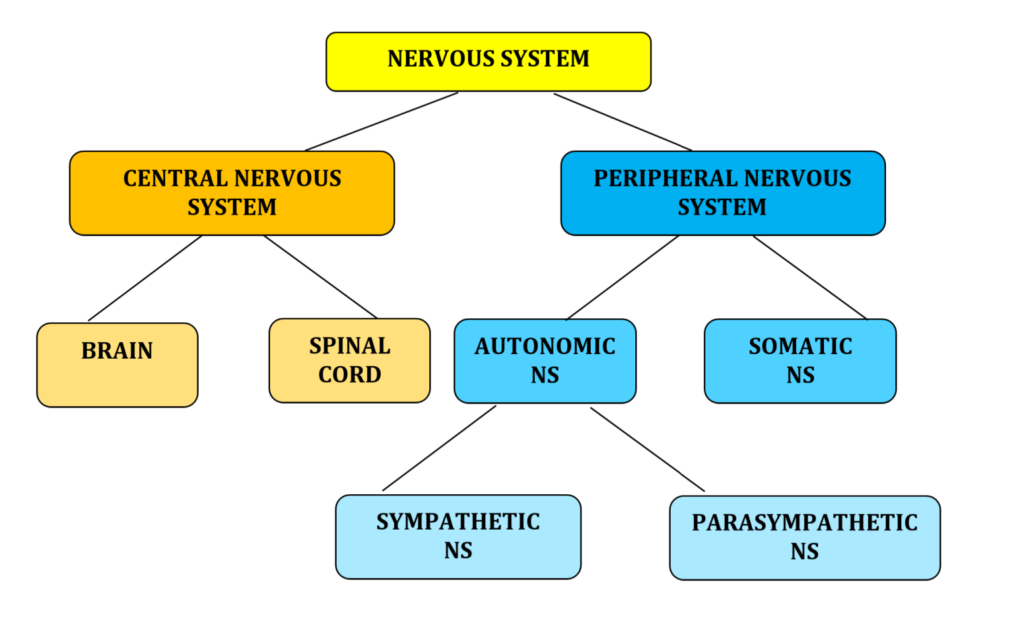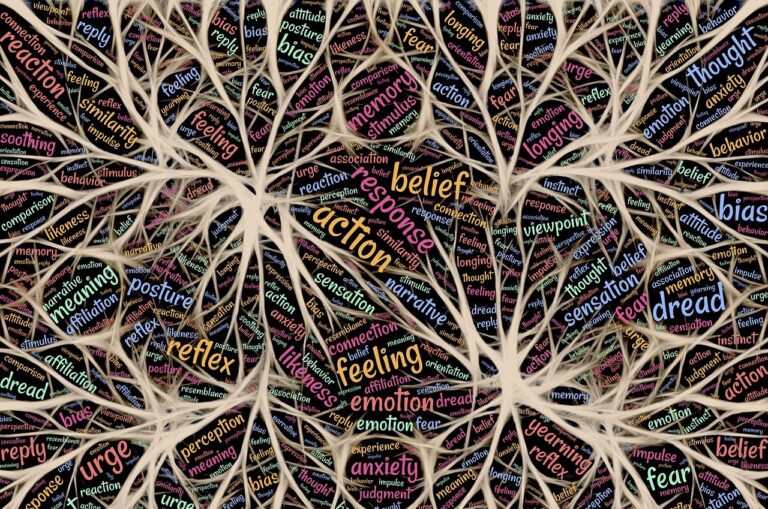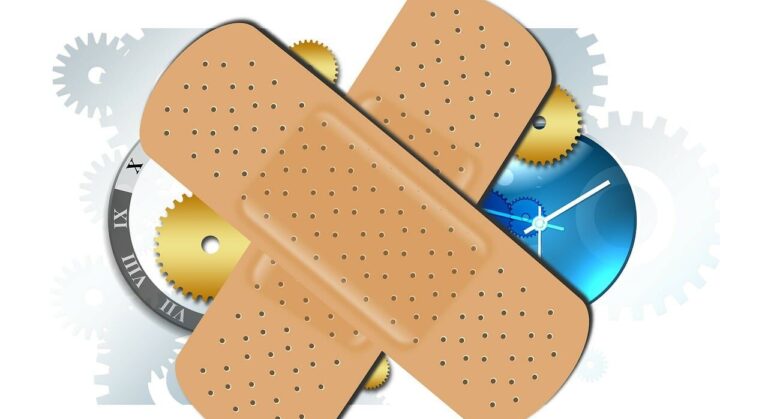As humans we are programmed to observe and interact with our environment, and depending on the experiences, we process them as either positive or negative cues. In childhood, an affectionate relationship with the mother is likely to embed positive beliefs about relationships. Whereas abuse and neglect can create feelings of scepticism and mistrust in others. These learnt schemas then determine how we respond to social situations and relationships. The nervous system is a complex wiring structure in the human body also responsible for overseeing this activity. The nervous system is divided into two parts: the central nervous system and the peripheral nervous system.

Central Nervous System (CNS)
The central nervous system is subdivided into two parts, the brain and the spinal cord.
Brain: Classed as the central processor of the body responsible for organising, storing and responding to incoming stimuli. The brain is the main organ of the body directly responsible for communicating with the rest of the body. A healthy brain development is critical to psychological and physical health.
Spinal Cord: Consists of nerve fibres connecting the brain to the rest of the body for effective physiological functioning.
Peripheral Nervous System (PNS)
The peripheral nervous system consists of nerves carrying signals between the central nervous system, the muscles, and organs (it is everything outside of the CNS). The PNS is made up of the somatic nervous system and the autonomic nervous system.
Somatic Nervous System (voluntary): This system allows our brain and muscles to communicate for movement. For instance, the brain sends signals to the muscles to allow picking up a cup or kicking a ball.
Autonomic Nervous System (involuntary): Supports the functioning of the body’s main glands and organs, like, the heart, lungs, and digestive system. This system is diligently at work in the background without having to intentionally think about it. For example, breathing, heart beating and digesting food.
Sensing Danger or Threat Signals
The autonomic system is a highly complex and busy system constantly at work. In addition to ensuring essential organ functions, this system is also central to threat responses. The autonomic system is further divided into, the sympathetic nervous system and the parasympathetic nervous system.
Sympathetic Nervous System: This is concerned with alerting the body to take action against danger. It is often referred to as the fight or flight response, preparing the body to mobilise in the face of a perceived or actual threat. For example, running away when confronted by a snake. In this state, the body is likely to experience an adrenaline rush, muscles tensing, and heart rate increasing.
Parasympathetic Nervous System: This is the safe return state of the body. The heart and breathing return to normal, and, feeling a state calmness when danger is no longer considered. This PNS helps to bring the adrenaline rush down, and the body to relax and slow down. It is also referred to as the rest and digest system. In extreme cases, when the body needs to preserve energy, it can shut the body right down to no-responsive, also referred to as the freeze state.
The sympathetic and parasympathetic work alongside each other to ensure a balanced and optimal nervous system functioning, however, adverse childhood experiences and traumas can cause these systems to become overactive or underactive. For instance, childhood abuse and neglect can lead to the sympathetic system operating on over-drive, constantly scanning for threats and being ready to react. As a result, the person may feel anxiety even when where there is no need to, this is because the brain has been wired to sense threat even in safe conditions. Traumas and maladaptive behaviours left unaddressed are associated with negative psychological and physical strain on the body. The Polyvagal Theory proposed by Stephen Porges, is a useful tool for a deeper understanding of how trauma can impede the effective functioning of the sympathetic and parasympathetic systems.




